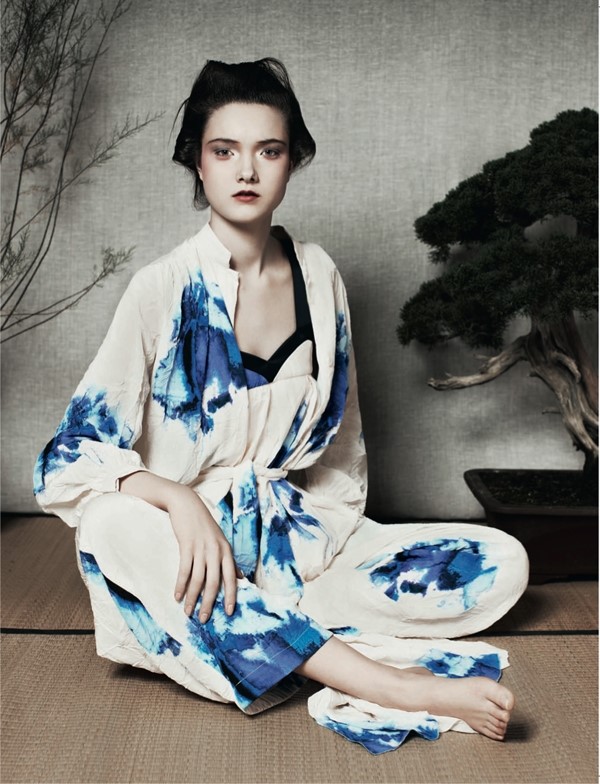Celebrating Ben Toms and Robbie Spencer's new story in the latest issue of AnOther Magazine, set designer speaks to Bonsai enthusiast Peter Chan...
Photographer Ben Toms and stylist Robbie Spencer's beautiful story in the latest issue of AnOther Magazine makes a clever nod to the issue's theme – There's No Place Like Home – with a beautiful set created by Janina Pedan featuring bonsai. The wonderful Japanese tradition of using minature trees grown in containers dates back over a thousand years. Here, Pedan interviews bonsai supplier and enthusiast Peter Chan of Heron's Bonsai and Cultural Centre and shares his photograph from 1984 when he met the Queen.
When did your love of bonsai start?
I started dablling in bonsai back in 1967 when I was quite involved with Studio pottery, which was my main hobby at the time. I came to the UK in 1963 after qualifying in Electrical Engineering, and I worked as a Chartered Electrical Engineer with the Electricity Supply Industry. While making ceramics, I thought it would be nice to make some ornamental plants pots that the Chinese used for their potted trees. I lived in a flat, so it was the ideal solution to growing plants in containers. There was no information about bonsai back in the late 1960s, so all the bonsai I created were my own experiments with these miniature trees. That is how my love affair with bonsai started. All the books that I have written on bonsai are really my experiments with various growing techniques.
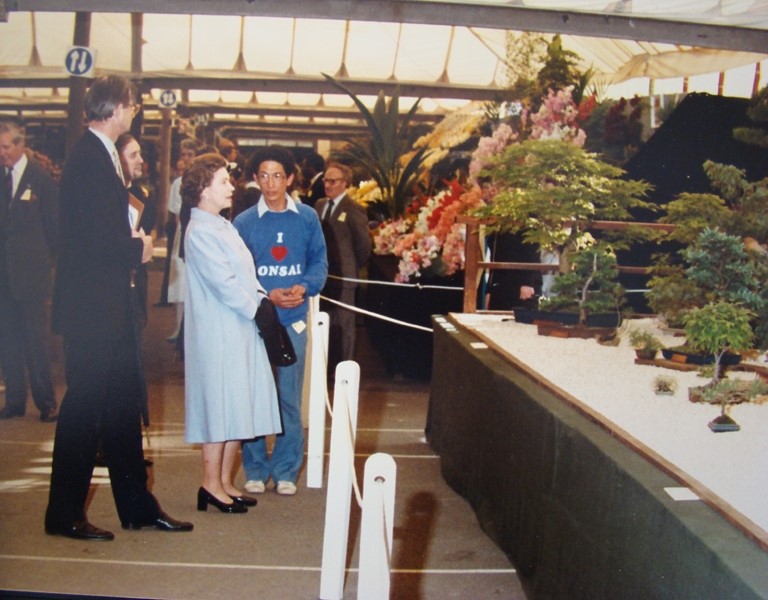
What is the allure of a potted miniature tree?
Although I am an engineer by profession, I have always loved the visual arts and because bonsai is about art and beauty – and about plants – bonsai seemed to be the ideal medium for me. It is also highly creative in that you can make or create a plant into any image or shape that you want it to be. Like any of the visual arts, the bonsai artist starts with a subliminal image of the tree he wants to create and with time and patience, he eventually achieves it. But what makes bonsai different from the other arts, such as painting or sculpture, is that it is not a static art. A bonsai is always growing and you have to keep up with the creative process as the tree grows. Above all, bonsai teaches you patience. The cultivation process cannot be hurried.
"Like any of the visual arts, the bonsai artist starts with a subliminal image of the tree he wants to create and with time and patience, he eventually achieves it"
Whilst handling some of your finer specimens I was very aware not to bend a single twig. If something broke, would the bonsai really plunge in value? And have you ever been involved in a bonsai catastrophe?
Yes, disasters do sometimes happen. Breaking a branch is not the most serious disaster, as a branch can always grow again. But if a tree dies for some reason, then that is the worst scenario. Breaking a branch can seriously devalue a bonsai.
Is Bonsai becoming more popular or is it a dying art?
In China and Japan it is not as popular as it once was, because young people are more interested in computer games and music etc. But in the West, bonsai is becoming more popular as it is a relatively new thing. In the last ten years, bonsai has spread to virtually every country and every continent. I am going to Brazil in May to take part in a Convention there.
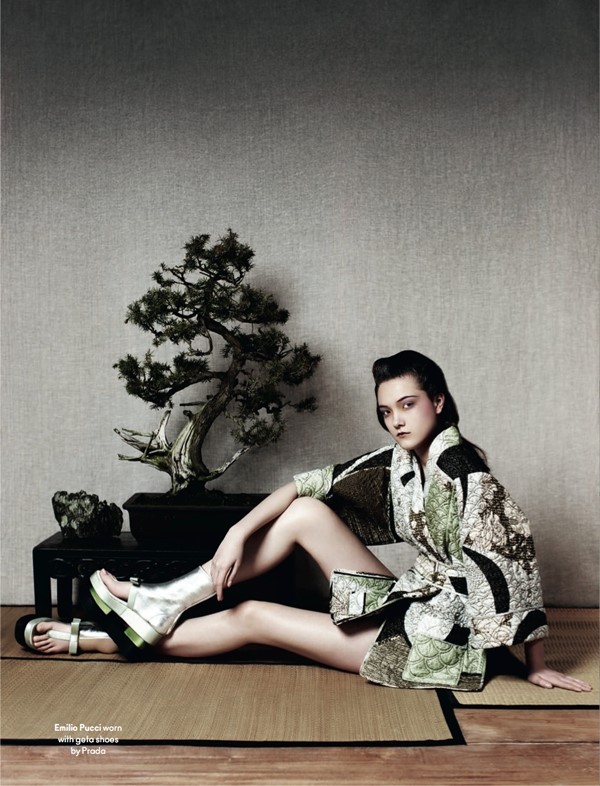
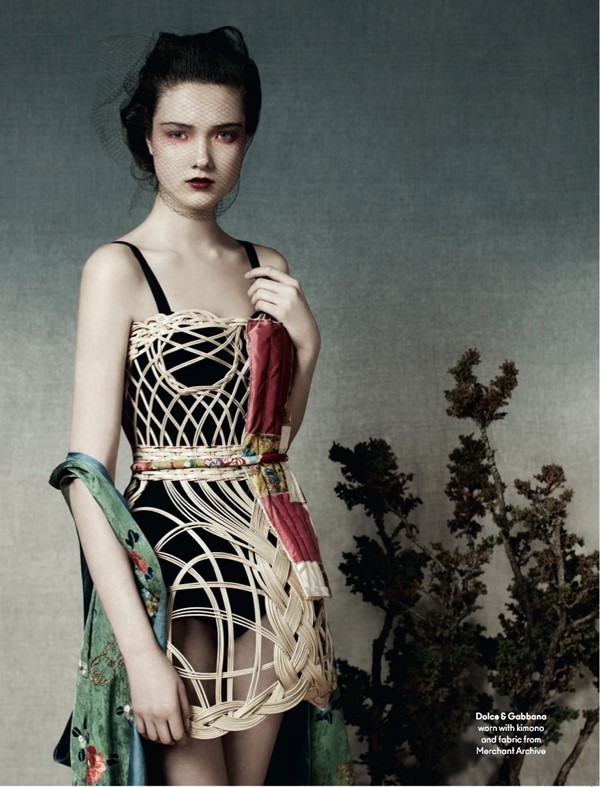
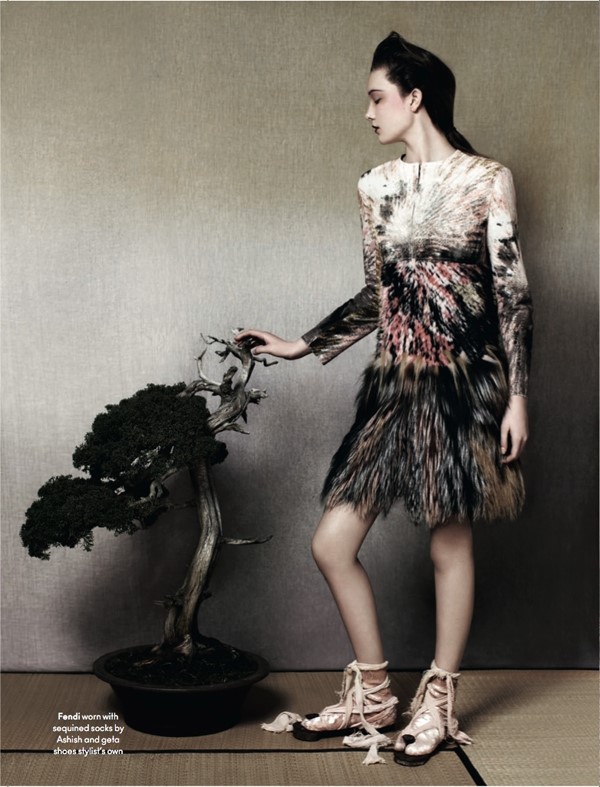
Hair: Raphael Salley at Streeters using Liz Earle
Make-up: Petros Petrohilos at Streeters
Model: Yumi Lambert at IMG
Casting director: Noah Shelley at AM Casting (Streeters NY)
Set design and interview: Janina Pedan
Photographic assistant: Amy Gwatkin
Digital assistants: Lee Whitaker, Rokas Darulis at Studio Private
Styling assistant: Elizabeth Fraser-Bell
Hair assistant: Michael Jones
Make-up assistant:Akari
Production: Emma Turpin, Sian Anstee at Intrepid
Post Production: Studio Private
